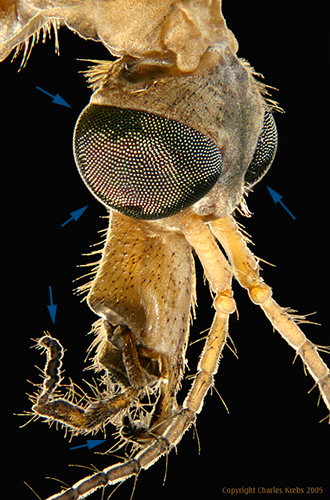I am certain that some really like the stark black background... "different strokes" and all that... (and in microscopy we certainly use darkfield a lot).
What really bothers me about some of the examples in the links in this thread is the very significant tonal blending where the dark subject details and structures tend to disappear into the dark background. (Look at them again with that in mind). If you like this basic lighting approach but the subject is such that this "tonal blending" prevents you from discerning the outer edges of a structure or fine detail along the periphery you can add some back-light to accentuate this detail. It can be very subtle or very emphatic depending on your taste, but is usually enhances the image, often dramatically.
Obviously this is much easier to do in a controlled indoor shot. But back in the "film days"

, when I chased more critters around outside, I would sometimes use a slaved flash behind the subject. If I wanted the "darkfield" look I would point it at the subject from the rear (watch out for flare, block it from hitting the lens directly). If I wanted to avoid the black background it could be positioned to illuminate the background of the picture that would otherwise go to black due to the light fall-off.
Here is a old image (an early stack form 2005), primarily front illuminated. Not the greatest shot, but I have indicated with blue arrows portions that would likely have blended into the black background had I not added a rear light to "separate" these areas form the background.



